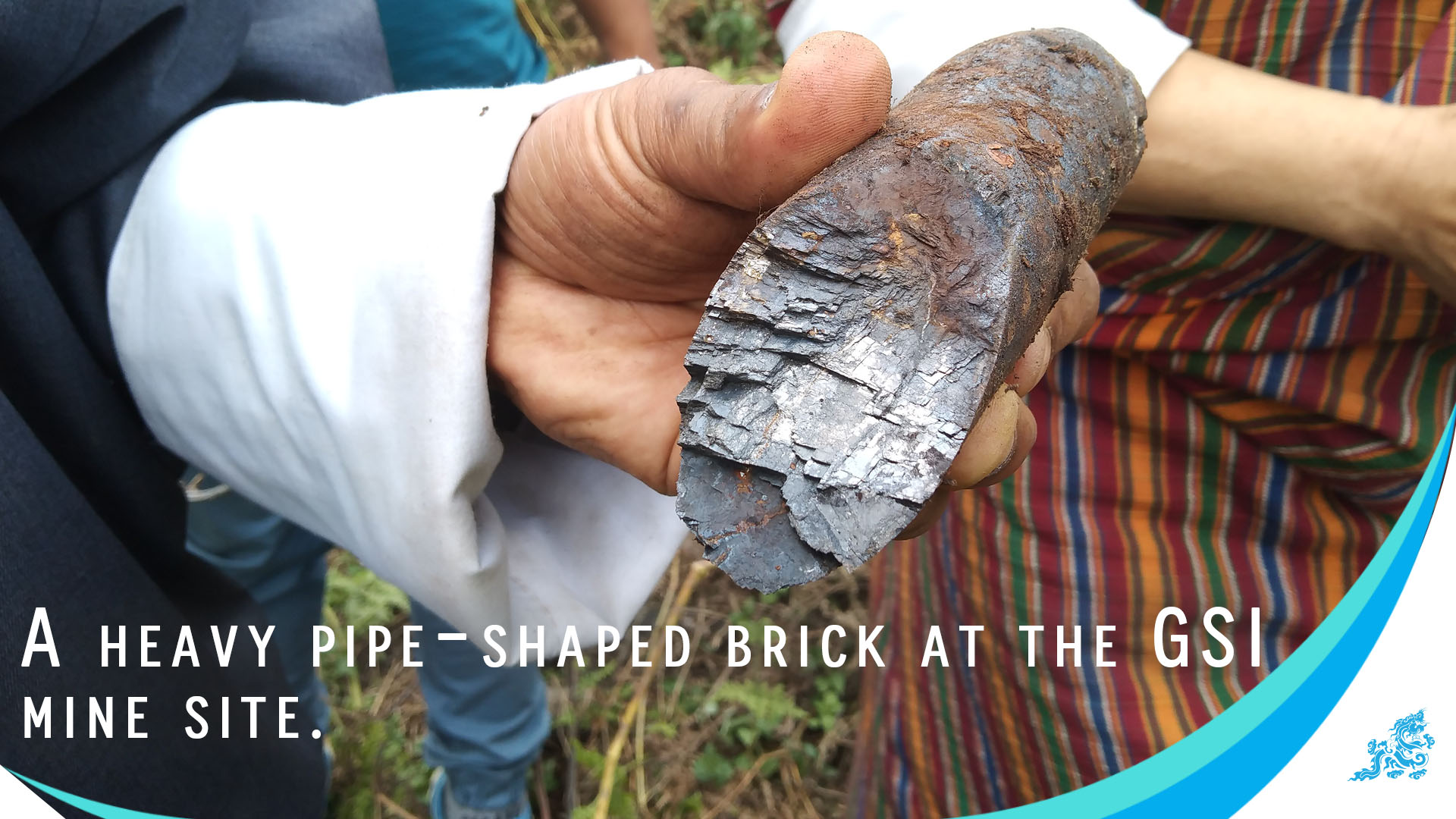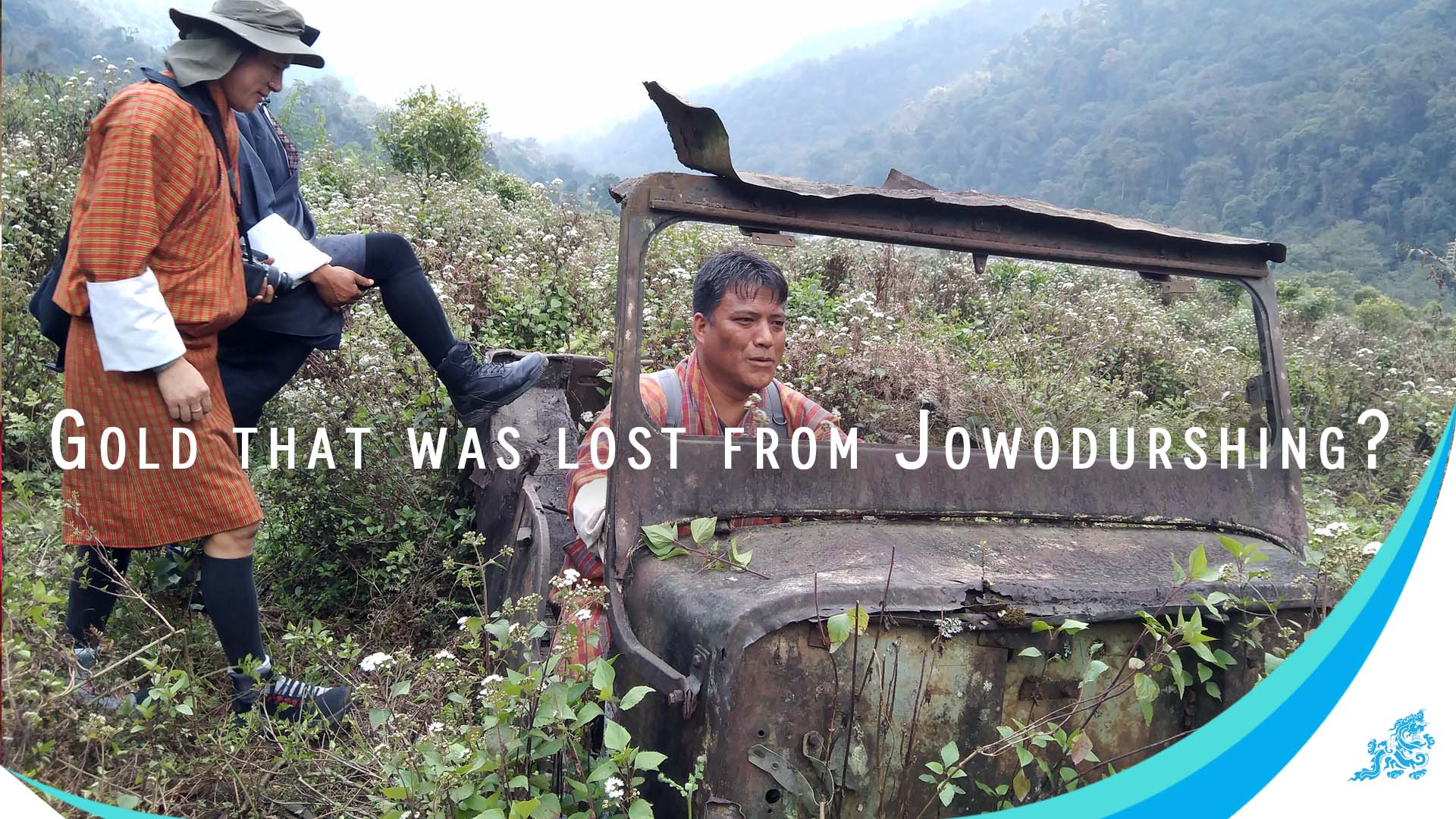Radi in Retey, Jigmecholing is among the last place in Sarpang before entering Korphu gewog in Trongsa — the vast pastureland in the middle of the thick forest is filled with the remains of worn out tyres and rusted metal poles.
There are also parts of a Jeep car; the engine removed and most of its parts rusted and discarded. A stream from Jowodurshing known as Durshing Chhu meanders out of nearby ranges and passes.
There is a story that no one here can tell in full. A story passed down to the younger generations by the elderly in Retey.
Jowodurshing, the Black Mountain, saw a lot of so-called activities. What happened after that, no one knows?
There are stories that the surveyors took the gold. They left after mining for 15 years. The reasons are unknown. There are stories about helicopters landing and taking off from the site where old tyres, rusted metal poles, and parts of a Jeep car are today.
Locals said there were houses and several heavy metals at Radi where more than 400 workers stayed during the mining. Only the paved footpaths are visible today.

A heavy pipe-shaped brick
What happened and when?
The geological survey of India. The time is between the 1960s and 1970s.
Singye, 75, from Retey, said that a dense forest cover of Radhi was cleared to set up the mining campsite. “It was not like we see today. We were given Nu 5 (rupees) to fell one tree. We did what we were told to do,” he said. “It was a big project. A huge investment.”
Singye also worked to build roads from Retey till Radhithang. “There were government officials. We just had to do what came was ordered.”
That “geological survey” went on for almost 15 years, says Singye. “Looking back, I can remember a huge drilling machine and two smaller ones. We could see the machines even today in nearby ranges.”
Locals say more than three ranges or mountains near Radi were dug as a part of the project. Roads were built crossing the mountain almost reaching Nabji-Korphu in Trongsa.
Although the information cannot be verified, elders of Radi say that there were automobile workshops, a movie hall, and quarters for the workers and officials.
Gold mining happened there.
Strange it is that in such a remote place there are at least three helipads—two at Radi campsite and one below Retey village.
Locals say that a 15 kilometres long road was built from Retey till Radi when the mining was active. The road was used to ferry the mines from Radi to Retey. The road disappears after some metres. There are several patches of the roads on the way to Radi.
Damchoe, 67, remembers the site as a big establishment. “It was almost like a town. There were electricity and generators. There were Bhutanese officials too. Nobody knew how the mining was done or what they were mining. We would not be allowed near the site.”
Singye said that he remembers mining coming to a halt after the roads were washed away by the stream. “Choppers were used for three days straight. It could have been winter. They also used people to transport towards the end. There were 15 of them.”
Sangay Tenzin from Retey said the mining was stopped suddenly. “Not sure what happened exactly, but I was told that the stuff from the mine was taken to India for the test. And that was it.”
Workers disappeared in ones and twos.
Two caretakers were looking after the campsite till 2002. They left the site after that.
Go to the GSI mine site in Radi and you will find the mine and the story yourself. They are there in ruins and disuse. But they are there in real.


